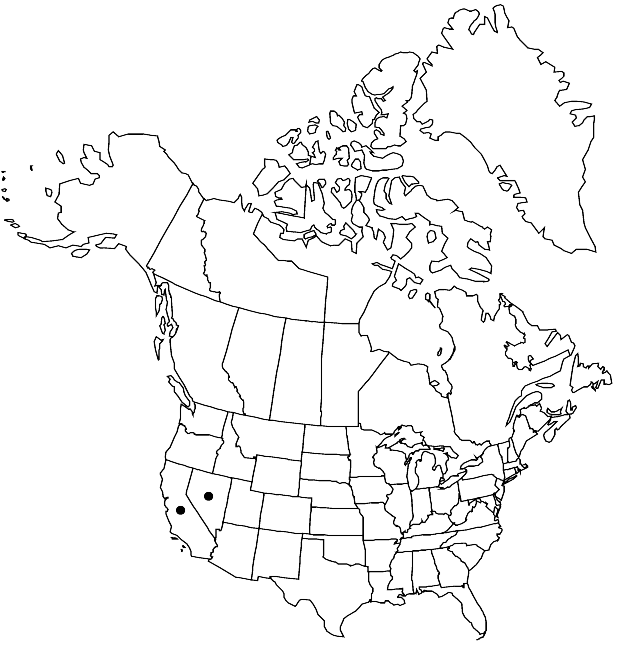Boechera xylopoda
Harvard Pap. Bot. 12: 250. 2007.
Perennials; long-lived; apomictic; caudex woody. Stems usually 1 from per caudex branch, arising from center of leaf tuft, elevated above ground surface on woody base, (3–)5–7.5 dm, pubescent proximally, trichomes short-stalked, 2–5-rayed, 0.25–0.9 mm., similarly pubescent distally. Basal leaves: blade linear-oblanceolate to oblanceolate, 3–7 mm wide, margins entire or somewhat dentate, ciliate near petiole base, trichomes (simple), to 1.5 mm, surfaces densely pubescent, trichomes short-stalked, 4–8-rayed, 0.15–0.5 mm. Cauline leaves: 8–18, usually not concealing stem; blade auricles 1–2 mm, surfaces of distalmost leaves sparsely pubescent. Racemes 20–38-flowered, usually unbranched. Fruiting pedicels descending-divaricate, usually recurved, 9–20 mm, usually pubescent, rarely glabrous, trichomes subappressed, branched. Flowers divaricate to pendent at anthesis; sepals pubescent; petals purple, 9–12 × 2–3.5 mm, sparsely pubescent (often some trichomes abaxially); pollen spheroid. Fruits reflexed, not appressed to rachis, not secund, straight, edges parallel, 5–7 cm × 2–2.5 mm; valves glabrous proximally, sparsely pubescent distally; ovules 98–126 per ovary; style 0.1–0.5 mm. Seeds sub-biseriate, 2–2.5 × 1.3–1.6 mm; wing continuous, 0.2–0.25 mm wide.
Phenology: Flowering Mar–May.
Habitat: Rock outcrops and gravelly slopes, often under shelter of shrubs in desert scrub, sagebrush, and chaparral communities
Elevation: 900-2000 m
Distribution

Calif., Nev.
Discussion
Although usually treated as a variety of Arabis (Boechera) pulchra, B. xylopoda is an apomictic taxon that is morphologically intermediate between B. perennans and B. pulchra (see M. D. Windham and I. A. Al-Shehbaz 2007b for detailed comparison) and probably arose through hybridization between those two sexual diploids.
Arabis trichopoda Greene (1908), not Turczaninow (1840) is an illegitimate name, sometimes found in synonymy with Boechera xylopoda.
Selected References
None.